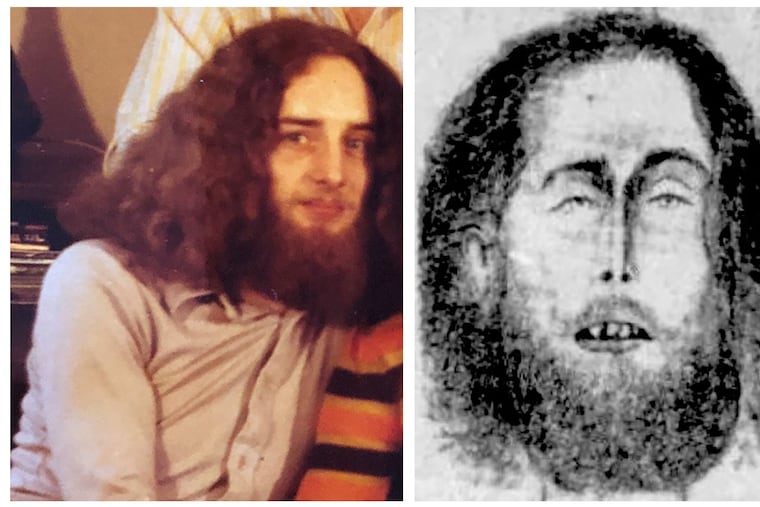‘Pinnacle Man,’ a 27-year-old hiker found in Pa. in 1977, is identified after nearly 50 years
Ultimately it was not DNA that cracked the case.

On a late January afternoon in 1977, two hikers on the Appalachian Trail in Berks County stumbled upon the body of a man. He had blue eyes and wore a tasseled brown suede jacket, blue slacks, and a ring with a blue stone in it.
Other than those few details, nobody knew who he was — or how he ended up in a cave near the Pinnacle, a thousand-foot peak on the Blue Ridge Mountains in Albany Township. Rescue crews brought him down the mountain and to Reading Hospital to be identified, the Morning Call reported at the time, but they had no luck.
Over the decades, he came to be known as “Pinnacle Man,” his identity a maddening mystery.
Now, nearly 50 years later, authorities have finally figured out who he was: a 27-year-old named Nicolas Paul Grubb. The successful effort to identify him ultimately didn’t rely on new technology or a lucky genealogical break, but instead on a state trooper finding a card with Grubb’s original fingerprints, taken during the original autopsy, that was long missing.
“He went back — he challenged the assumptions that we had lost the fingerprints. He found the fingerprints,” George Holmes, chief deputy coroner of Berks County, told the Trentonian.
A 1977 autopsy found that Grubb died from a barbiturate overdose in an apparent suicide. Without a name or a family to notify, authorities sent him to be buried in Berks County Potter’s Field, alongside the remains of others who were unidentified or unclaimed.
After his burial, all the police had to go on was a sketch drawn during the autopsy, depicting a bearded man with long curly hair. Grubb’s fingerprints were also taken at the autopsy, Holmes said, but police thought the originals were lost. When the cold case came to the attention of the Coroner’s Office in 2009, police could find only “copies of copies of the fingerprints,” which wouldn’t work for tracking down the man’s identity.
In 2019, the Coroner’s Office changed tack. The coroner exhumed Grubb’s body, in an effort to test his DNA against those of missing men from Florida and Illinois. That effort failed; a second attempt, in 2023, also failed. Grubb’s facial bones had deteriorated too much to do a forensic facial approximation, a process that creates the image of a face from unidentified human remains.
The coroner started to consider reburying Grubbs.
But then earlier this month, a cold-case detective with the Pennsylvania State Police found the original fingerprint card from the autopsy in the state police archives. He submitted it to NamUs, a national database of missing and unidentified people. Within an hour, an FBI fingerprint expert matched the autopsy prints with fingerprints from a misdemeanor arrest in Colorado in 1975.
They were both from Nicolas Paul Grubb.
Grubb was born in 1950 in the London borough of Croydon, according to birth records from the United Kingdom, to Paul and Aline Grubb. His grandfather, Norman Percy Grubb, was a prominent British evangelical leader and missionary who relocated much of his family from England to Fort Washington, Pa., in the 1950s to lead the U.S. headquarters of the Worldwide Evangelization Crusade International.
At some point, Nicolas Grubb — his family called him “Nicky” — and his parents joined their relatives in the U.S. Details of his life here are scarce: He served in the Pennsylvania Army National Guard and was honorably discharged in 1971.
Many of Nicolas Grubb’s direct family members are now deceased. Charles R. Grubb, 39, of New Milford, Conn., is the son of Nicolas Grubb’s cousin. His mother, he said, knew Nicolas’ sister Sandra, who died from lung cancer in the 1990s. Charles recalled the inexplicable disappearance as a piece of disturbing family lore.
“All I knew is that he disappeared and spent some time in Colorado,” he said. “I’ve always been kind of intrigued by it.”
Charles Grubb’s mother, who he said had always been interested in the cold case, was surprised when a local police officer appeared at their home about a week and a half ago. He was there on behalf of the Pennsylvania State Police task force charged with handling the cold case, with new details about the disappearance.
“It was really interesting and intriguing to learn,” he said, “that there was finally some culmination to his disappearance. To this mystery.”
Fifty years after his death, the police and death investigation into how and why he died remain ongoing, the Coroner’s Office said.
An earlier version of this article incorrectly reported Grubb’s birth mother; it has been updated to reflect new information from a relative. It also misidentified the police officer who got in touch with Charles R. Grubb’s mother. It was a local officer who called on behalf of Pennsylvania State Police.